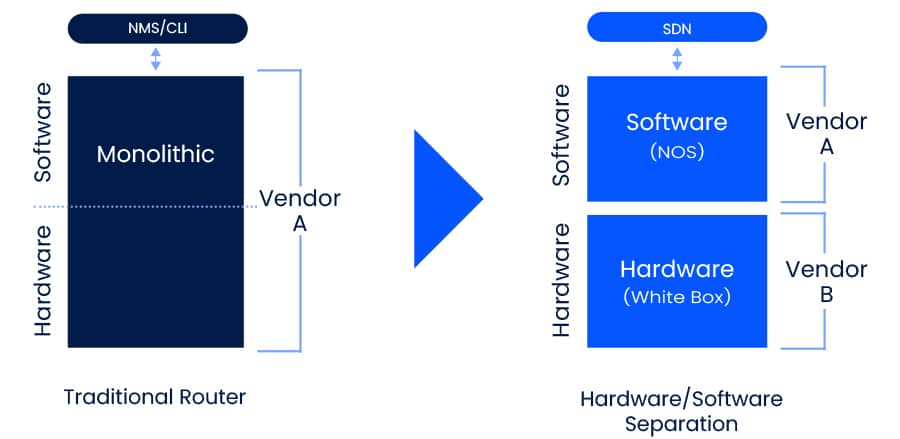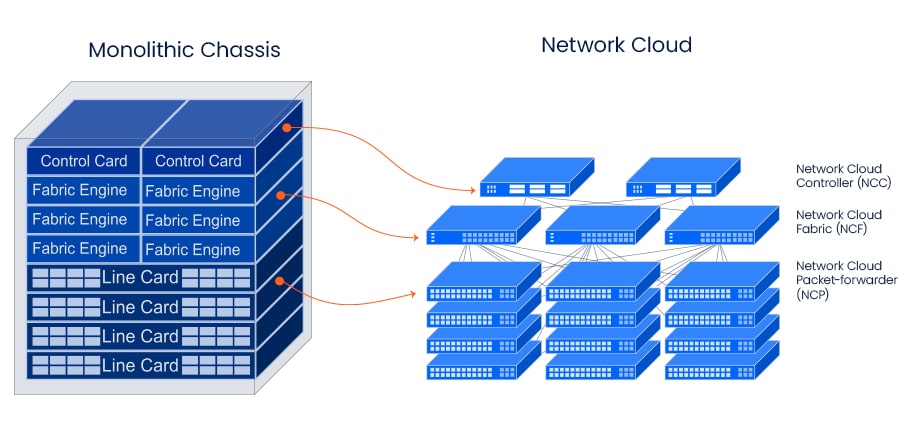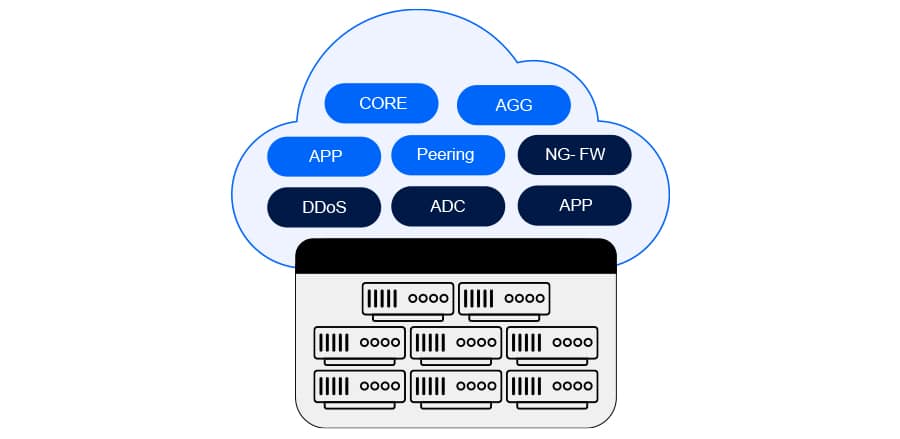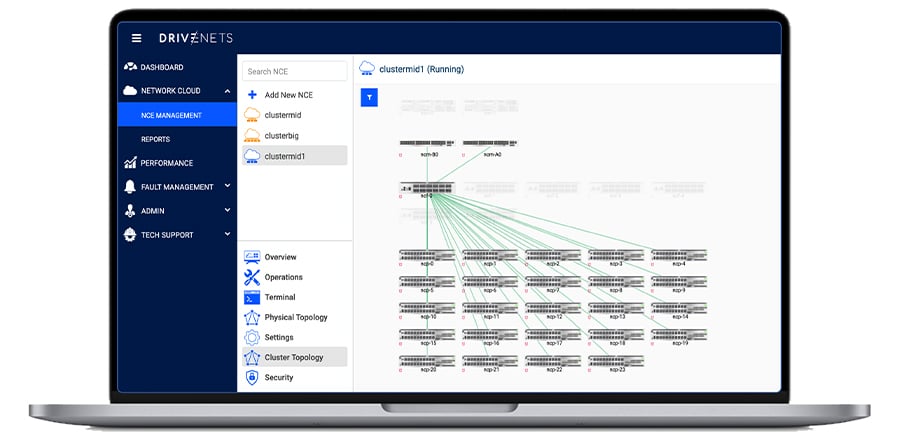Lack of Competition and Innovation in Network Infrastructure
Markets that change slowly often have a market environment characterized by strong incumbents with little incentive to innovate. In these cases, real change is usually brought about by newcomers. For example, when Tesla Motors began production in 2008, it introduced a new vision for the automobile market without being burdened by legacy solutions and sales strategies. Another example is Amazon Web Services (AWS), which revolutionized the on-premises infrastructure market by offering a more flexible, scalable, and cost-effective alternative. In both cases, the incumbents were heavily invested in outdated technology or go-to-market strategies and were shaken by the newcomers.
The networking industry is also stagnant – telecommunications networks are built today in the same manner as they were decades ago – despite significant changes in the market environment. Service providers are investing large amounts of capital to scale their networks to meet the growing demand for data traffic, yet their revenue and monetization opportunities are being reduced by over-the-top (OTT) services and hyperscaler services.
Clearly, future demands cannot be met by current networks. Service providers require a more agile and flexible infrastructure to quickly introduce new services, scale networks efficiently, and handle increased traffic while reducing costs.
Pending Network Evolution
Current networking incumbents have been slow to shift from their high-revenue business model to a more agile, flexible, and open solution that would also affect their revenues. Despite a few attempts in recent years, such as network function virtualization (NFV), these efforts have not been as successful as cloud computing. Many NFV deployments failed to achieve scale and cost benefits because they simply ported their network functions to virtual machines (VMs) rather than fully utilizing the potential of NFV.
Even a shift to cloud-native network function (CNF) could not deliver the same outcome as cloud computing. Despite improved software scalability, CNF deployments have fallen short in terms of cost-effectiveness; this is due to limitations in scaling hardware beyond the current chassis and the use of standard x86 servers that are not optimized for network-oriented services. Processing terabits of traffic requires an application-specific integrated circuit (ASIC) rather than a general-purpose CPU (x86), which would be expensive and inefficient.
The evolution of networking is still pending, and service providers are still in need of a new network solution.
DriveNets Network Cloud: Build Networks like Cloud
To address the needs of service providers, DriveNets Network Cloud is moving beyond NFV and CNF and is taking inspiration from the cloud-native virtualized approach of hyperscale clouds. DriveNets has applied this approach to large-scale networks.
To understand better what exactly DriveNets Network Cloud is, let’s review the following four steps: disaggregation, distribution, containerization, and orchestration.
#1 Network Disaggregation
The first step is to disaggregate and separate the hardware and software components that carry out the main functions of traditional and monolithic networking hardware. Disaggregating the network infrastructure allows us to manage the hardware and software components independently, which is also the first step in reducing costs.

#2 Network Distribution
The second phase involves taking the large monolithic router design and abstracting its hardware resources to standard white boxes using the Clos network architecture. These resources are then connected and coordinated using a hypervisor to form a cluster. Each cluster can be managed as a single network element, regardless of its size or complexity, using a familiar command-line interface (CLI), like a traditional router.
Distribution allows the control plane to run on x86 servers, and the data plane to be implemented using a cluster of white boxes. There are two building blocks in the data plane: Network Cloud Packet Forwarder (NCP) and Network Cloud Fabric (NCF). Both optimized using specific ASICs, they allow the cluster to scale from a single stand-alone solution of 2.4Tbps to a large cluster of 921Tbps, made up of dozens of white boxes operating as a single routing entity.
This step improves agility, scalability, and cost-efficiency, as the resources are treated as a shared pool, and the lack of a physical chassis enables unlimited incremental scaling.

#3 Containerization
After separating the software from the hardware and overcoming the limitation of chassis scaling by using distribution, it’s time to discuss the software. As previously mentioned, one of the main limitations of NFV is that most network functions were simply ported to VMs. To address this, the DriveNets Network Operating System (DNOS) was developed using a cloud-native architecture. This allows for fast scaling and the ability to run multiple networks in separate software containers on top of a shared resource pool.
Each networking function can utilize any underlying hardware resources, such as physical interfaces, network processing units (NPUs), CPUs, and ternary content-addressable memories (TCAMs). For example, both a core router and a peering router can be deployed on the same cluster while operating as two individual routing entities. Additionally, the network cloud cluster is not limited to network functions; for example, a third-party firewall can be added as an additional and separate software container while utilizing the same underlying resource pool.

#4 Network Orchestration
Distributing and disaggregating network architecture is useless without the ability to orchestrate and control a cluster like a single network device (containing multiple individual routers). DriveNets Network Orchestrator (DNOR) turns a series of connected white boxes into a holistic cluster with independent virtual hosts. Breaking the monolithic software model, DNOR’s container-level network orchestration accelerates the introduction, deployment and scale of hosted services, whether DriveNets or third-party.
DNOR is the “chassis manager” of the distributed disaggregated chassis (DDC). Establishing control and management links to every component in the DDC cluster, DNOR commands connectivity, installed software components, and configuration of each hardware component based on real-time indications collected from the control and management channels. Once established, a DDC cluster can be treated as a single network element (AKA a router) towards external devices or management systems. DNOR also enables individual management of the DDC as a cluster down to the component level for maximum control of the network.

Flexibility and Agility Integrated into a Revolutionary Network Architecture
In summary, DriveNets Network Cloud is a cloud-native, software-based networking solution that supports multiple networks and services over a shared disaggregated infrastructure with virtually unlimited capacity and scalability. By utilizing the four steps of disaggregation, distribution, containerization, and orchestration, DriveNets has developed a networking solution that enables service providers to deploy any network function using a more agile and flexible architecture. This reduces the cost of growing network traffic without compromising network performance and availability.

Download eBook
Network Cloud, Better Operations




